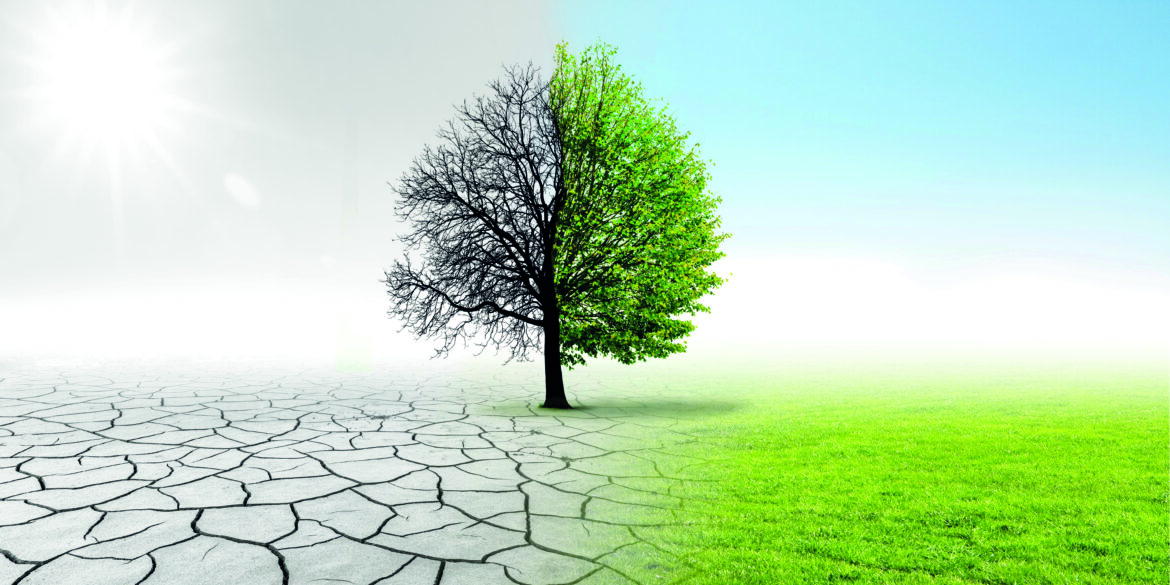By combining virtual and augmented realities, Master’s in Computer Information Systems graduate RYAN HAMILTON has created an educational app that brings the impacts of climate change to life.

Climate change is a topic that comes up no matter what we’re discussing, be it food or fashion, travel or health. It affects us all, which means it needs to be given priority if we want the future to be brighter than our past. Ryan Hamilton understands this all too well, which is why he’s dedicated his Master’s thesis to aiding educators in teaching it and students in visualising its outcomes.
“EcoXR is a tablet application that combines two of the fastest-growing technologies in the world, namely virtual reality [VR] and augmented reality [AR],” Ryan explains. “The idea behind the app, which can be used on a simple tablet, is to enhance the learnability of climate change through a highly-immersive experience.”
The app comes with two distinct sections. One of them uses VR and sees users enter a virtual, modern home where they have a series of tasks to perform. These include turning off taps, switching off lights, and adjusting the temperature on an air-conditioning unit.
The other section uses AR to explore three virtual ecosystems and how climate change is reshaping them. These are namely the Arctic ecosystem, where melting ice caps are resulting in the decline of glacial environments; a Field and Forests ecosystem, where water bodies are drying up, endangering food sources for wild animals and leaving scarce opportunities for productive farming; and a Sea Coast ecosystem, where sea levels are rising, wreaking havoc on coastal communities.
“These two realities are intertwined in the app, with the future state of each ecosystem changing based on the user’s efforts at ‘fixing’ critical environmental issues in their virtual home.”
But the app goes a step further. It explains the process behind what is happening through short and easy-to-understand texts compiled from information published in reputable scientific journals and via statistics released by NASA and the European Commission, among others.
“Each action, no matter how small, can impact our environment”
“The ultimate aim of EcoXR is to aid youths and adults understand how each action, no matter how small, can impact our environment,” Ryan asserts.
To create such an app, Ryan needed to merge various disciplines. On the one hand, there was the technological side of the process. This required him to be knowledgeable in both VR and AR. But he also needed to look into how tablet sensors work and how three-dimensional elements could be assembled to showcase ‘living’ ecosystems. On the other, there was the pedagogical element (the method of teaching), which meant Ryan had to ensure that the app was imparting information in a way that students could learn from it.
“Understanding how climate change is taught was an obvious first step in this process. To ensure I was on the right track, I contacted the Institute for Climate Change and Sustainable Development and a foreign start-up that focuses on climate change education to find out what’s already on the market and what gaps EcoXR could fill.
“Then I looked at the pedagogy of climate change and how the app performed that role. When the first version of the app was completed, I asked educators who teach climate change as part of their syllabus to test it.”
These educators were also invited to fill out a system usability scale (SUS) questionnaire before participating in one-on-one interviews where they voiced their likes, dislikes, and proposed amendments. This led to suggestions for future developments, including the importance and effectiveness of having consistent and brief informational areas.
“I have been working on this application since August 2020 now, and I’m happy most educators loved the idea and thought it would be helpful in classrooms or educational museums.
“I hope to keep working on the app or find someone else who will take over… From their suggestions, we’ve already pinpointed some of the work that needs to take place next, including better handling of the tablet’s working memory [RAM] to ensure a smoother experience for learners.”
We stand behind this call, especially since such a project shows how combining technologies can aid in teaching such a subject. After all, what better way is there to raise awareness about a topic like climate change than through the education of the upcoming generation?

